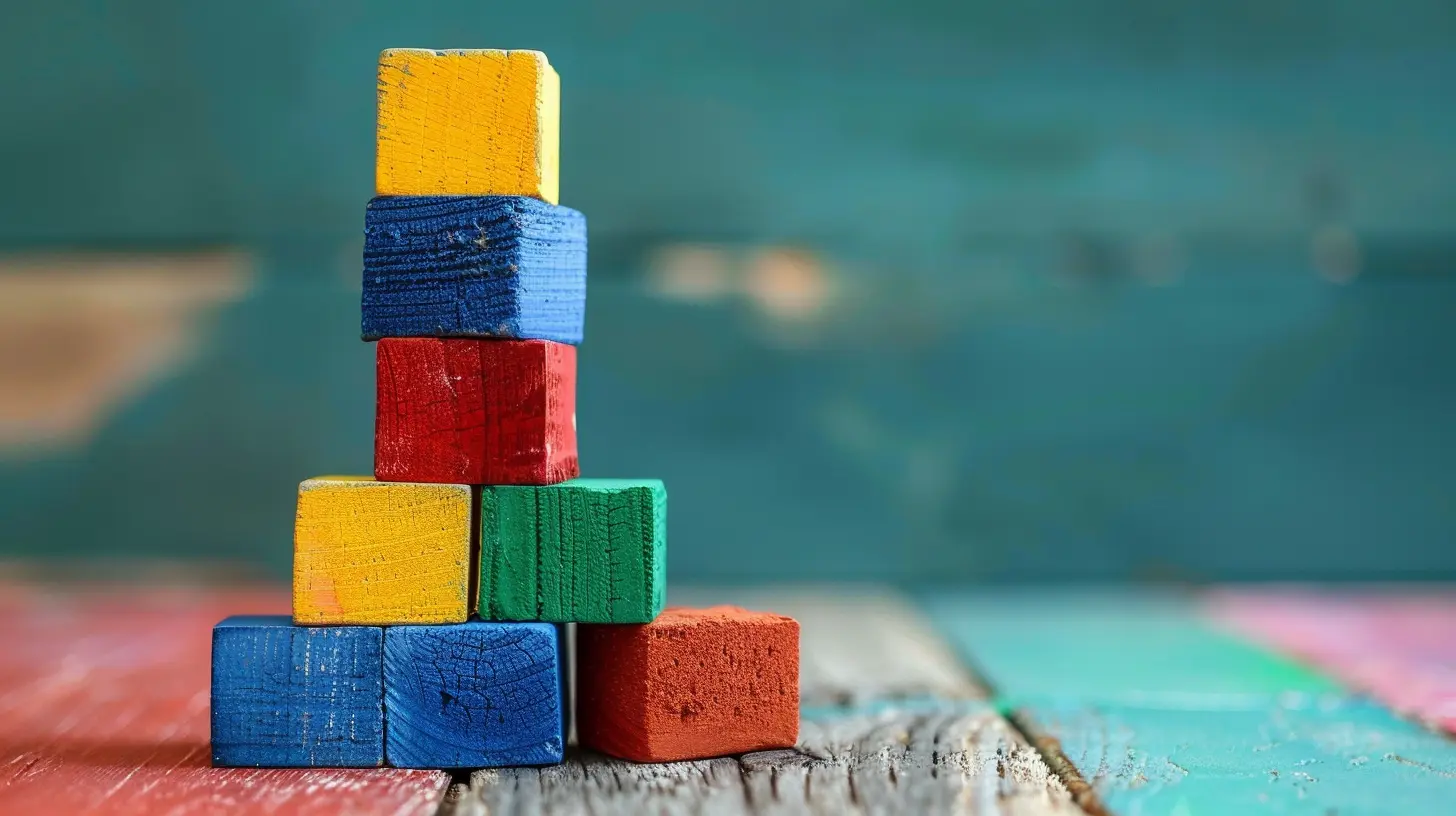Grammar Drills vs. Natural Acquisition: Which Approach Works Best?
22 December 2024
Learning a language is no easy feat. It’s a journey filled with twists, turns, and sometimes...frustration. But when it comes to mastering the intricate details of grammar, there are two main roads you can take: grammar drills or natural acquisition. These two methods often spark debates among educators, learners, and linguists alike. Which approach works best? Should you spend hours practicing grammar exercises, or should you immerse yourself in real-world language and let the rules sink in naturally?
In this article, we'll dive deep into both approaches, explore their pros and cons, and help you decide which might be the right path for your language-learning journey.
What Are Grammar Drills?
Before we start discussing which method works best, it's crucial to understand what grammar drills are. Simply put, grammar drills are structured exercises specifically designed to teach and reinforce grammar rules. These can range from fill-in-the-blank exercises to repetitive sentence construction tasks.Think of grammar drills as the grammar equivalent of going to the gym. You’re doing reps, again and again, to build and strengthen your “grammar muscles.” These exercises are often focused on a single grammar rule at a time, giving you the chance to really hone in on specific structures like verb conjugations, tenses, or sentence formations.
The Pros of Grammar Drills
1. Focused Attention on RulesGrammar drills offer you the chance to zero in on particular grammar points. If you're someone who loves structure and needs to understand the “why” behind language, this method can be incredibly helpful.
2. Immediate Feedback
Whether you're practicing online or in a classroom setting, grammar drills often come with immediate feedback. This means you can instantly see where you went wrong and correct your mistakes.
3. Reinforces Accuracy
Repetition builds confidence. The more you practice, the better you get at applying grammar rules correctly. Over time, grammar drills can help you avoid those pesky mistakes when you're speaking or writing.
The Cons of Grammar Drills
1. Can Be BoringLet’s face it: grammar drills can be mind-numbing. Doing repetitive tasks can feel tedious, especially if you're more interested in using the language rather than dissecting it.
2. Lacks Real-World Context
While grammar drills are great for understanding rules, they often lack context. Language isn't just about rules—it's about communication, and grammar drills don't always prepare you for the nuances of real-life conversations.
3. Risk of Overemphasis on Perfection
Language isn’t just about getting everything right; it’s about expression. Over-reliance on grammar drills can make you overly concerned with being perfect, which can hinder your fluency and confidence when speaking.
What Is Natural Acquisition?
Now, let's talk about the other road: natural acquisition. This method involves learning a language in much the same way children learn their native language. It’s less about studying grammar rules and more about immersing yourself in the language through listening, reading, speaking, and real-life interactions. Over time, you start to pick up the language's grammar organically, without explicitly being taught the rules.Think of it like learning to ride a bike. You don’t start by reading a manual on bicycle mechanics; you hop on, fall a few times, and eventually, you figure it out. That's how natural acquisition works—you learn by doing.
The Pros of Natural Acquisition
1. Real-World ApplicationNatural acquisition places you in real-world situations where you're using the language, not just studying it. This means you're learning words, phrases, and sentence structures that people actually use in everyday life.
2. More Engaging
Let’s be honest: listening to music, watching movies, and having conversations are far more enjoyable than filling out grammar worksheets. Natural acquisition keeps you engaged and motivated to continue learning.
3. Learn Like a Native Speaker
This method mimics how native speakers acquire language, which means you’re more likely to develop a natural feel for the language, including idioms, slang, and colloquial expressions that aren’t always taught in textbooks.
The Cons of Natural Acquisition
1. Takes Longer to Grasp Grammar RulesWhile you may become conversational faster, it might take longer to get a solid grip on the finer points of grammar. If you're someone who needs to understand the "why" behind language rules, you might find this method frustrating.
2. Can Lead to Fossilization of Mistakes
Without explicit grammar instruction, you might develop bad habits or "fossilize" mistakes. For example, you might frequently misuse a verb tense without realizing it, and it can be hard to break that habit later.
3. Not Ideal for Every Learning Style
Some people thrive on structure and rules. If you're one of those learners who needs a clear framework to understand how a language works, natural acquisition alone may not be the best approach for you.
Comparing Grammar Drills and Natural Acquisition
Now that we’ve broken down both approaches, let’s compare them head-to-head in a few key areas.1. Time to Fluency
Natural acquisition tends to get you conversational faster. You’ll be able to pick up phrases and start using them in real-life situations fairly quickly. On the flip side, grammar drills can slow you down initially, as they focus more on accuracy than fluency. However, once you’ve mastered the rules, you may find that your long-term fluency benefits from the solid grammatical foundation.2. Accuracy vs. Fluency
Grammar drills are all about accuracy. You’ll learn the rules and how to apply them correctly, but it might take longer for you to feel comfortable speaking fluidly. Natural acquisition, however, prioritizes fluency—you’ll be able to communicate early on, but you might make more mistakes along the way.3. Cultural Understanding
Language is more than just a set of rules; it’s a reflection of culture. Natural acquisition immerses you in the culture of the language you’re learning, which can help you understand nuances, idioms, and cultural references. Grammar drills, while helpful for understanding the structure, don’t usually offer this kind of cultural insight.4. Learning Style Compatibility
This is a big one. If you're a structured learner who loves rules and needs to understand the why behind everything, grammar drills will probably feel more satisfying. But if you're more of an experiential learner who prefers to pick things up as you go, natural acquisition will likely be more engaging for you.
So, Which Approach Works Best?
Here’s the thing: there’s no one-size-fits-all answer. The best approach depends on you—your learning style, your goals, and even your personality.If you’re aiming for fast conversational skills and you enjoy immersing yourself in the language, natural acquisition might be the way to go. You’ll pick up the rhythm of the language quicker, and you’ll likely enjoy the process more.
But if you’re someone who values precision and wants a solid understanding of grammar from the get-go, then grammar drills could be your best bet. While it may take longer to feel comfortable speaking, you’ll have a strong foundation that will serve you well in the long run.
The Hybrid Approach: The Best of Both Worlds?
Why not combine both methods and get the best of both worlds?Many language learners find that a hybrid approach works wonders. You can focus on grammar drills to build a strong foundation, while also immersing yourself in the language through natural acquisition techniques like watching movies, chatting with native speakers, or listening to podcasts.
Think of it like learning to dance. You need to practice the steps (grammar drills), but you also need to feel the music and just let go (natural acquisition). The balance between the two can lead to more effective language learning.
Conclusion
In the battle between grammar drills and natural acquisition, the answer isn’t a clear-cut one. Both methods offer distinct advantages, and the best choice depends on your individual learning style and goals. While grammar drills provide a strong foundation in accuracy, natural acquisition promotes fluency and real-world use.Ultimately, a balanced approach that incorporates both methods may be the most effective way to master a new language. Whether you're drilling grammar rules or immersing yourself in the language, the key is consistency and enjoyment. After all, language learning is a marathon, not a sprint—so find the path that keeps you motivated and engaged.
all images in this post were generated using AI tools
Category:
Second Language AcquisitionAuthor:

Anita Harmon
Discussion
rate this article
18 comments
Elise McLaury
This article raises an intriguing question! I’m curious about how different learners respond to grammar drills versus natural acquisition methods. Do certain age groups or backgrounds influence which approach is more effective? It would be fascinating to explore individual success stories from both perspectives!
February 13, 2025 at 11:18 AM

Anita Harmon
Thank you for your thoughtful comment! Age and background can indeed influence the effectiveness of grammar drills versus natural acquisition. Exploring individual success stories could provide valuable insights into which methods resonate best with different learners.
Clover Ward
Balance drills with real use for mastery.
February 2, 2025 at 3:43 AM

Anita Harmon
Absolutely agree! Balancing drills with real-life application enhances mastery and promotes deeper understanding.
Elena McElveen
Great article! It’s fascinating to explore the balance between structured grammar drills and the fluidity of natural language acquisition. Both have their merits!
January 30, 2025 at 7:29 PM

Anita Harmon
Thank you! I'm glad you enjoyed the article. Finding the right balance is indeed key to effective language learning!
Lucas McClary
Both grammar drills and natural acquisition have their merits. While drills enhance precision, natural acquisition promotes fluency. A balanced approach, integrating structured practice with immersive experiences, may yield the best results in language learning.
January 26, 2025 at 3:28 AM

Anita Harmon
Thank you for your insightful comment! I completely agree that a balanced approach, combining both grammar drills and natural acquisition, can lead to optimal language learning outcomes.
Axel McMichael
While grammar drills provide structure, natural acquisition fosters genuine communication skills. Balancing both methods may yield the most effective language learning experience for diverse learners.
January 23, 2025 at 5:06 AM

Anita Harmon
Thank you for your insightful comment! I agree that a balanced approach, integrating both grammar drills and natural acquisition, can effectively cater to diverse learning styles and enhance overall communication skills.
Pandora McKittrick
Both grammar drills and natural acquisition have their merits. A balanced approach, combining structured practice with immersive experiences, often yields the best results in language learning.
January 19, 2025 at 9:02 PM

Anita Harmon
Thank you for your insightful comment! I completely agree that a balanced approach can effectively enhance language learning by leveraging the strengths of both methods.
Noelle Carr
Both methods have merit; effective learning often combines structured drills with natural exposure.
January 17, 2025 at 9:45 PM

Anita Harmon
Thank you for your insight! I agree that a balanced approach incorporating both structured drills and natural exposure can enhance language learning.
Soleil Bailey
Great insights! Both methods have valuable benefits for learning.
January 15, 2025 at 9:40 PM

Anita Harmon
Thank you! I appreciate your thoughts on the benefits of both methods. They each offer unique advantages for enhancing language learning.
Sienna Duffy
Consider blending both for best results!
January 13, 2025 at 5:19 AM

Anita Harmon
Thank you for your suggestion! Blending both approaches can indeed provide a well-rounded experience for learners.
Elora Hernandez
Both grammar drills and natural acquisition have their merits; a blended approach can enhance learning. Combining structured practice with real-world language exposure often leads to more effective mastery.
January 8, 2025 at 9:35 PM

Anita Harmon
Thank you for your insightful comment! I completely agree—balancing structured grammar drills with natural language exposure can create a more robust learning experience.
Vesper McAndrews
What a fantastic read! It's so refreshing to explore the debate between grammar drills and natural acquisition. Both have their merits—finding the right balance can spark joy in learning!
January 4, 2025 at 4:24 AM

Anita Harmon
Thank you! I'm glad you enjoyed the article. Finding that balance is indeed key to a joyful learning experience!
Dorothy McMahon
Both grammar drills and natural acquisition have their merits. Drills provide essential structure and clarity, while natural acquisition fosters intuitive understanding. The best approach often combines both methods, allowing students to grasp rules while also developing a flexible, real-world use of language. Flexibility in teaching is key to success.
January 1, 2025 at 9:43 PM

Anita Harmon
Thank you for your insightful comment! I completely agree that combining both grammar drills and natural acquisition offers a balanced approach to language learning, enhancing both understanding and practical usage. Flexibility in teaching truly is essential for student success.
Edward Wilkerson
While grammar drills offer structure, natural acquisition nurtures intuition. Striking a balance between the two may be the key—after all, knowing the rules is great, but feeling the language is magic!
December 28, 2024 at 11:33 AM

Anita Harmon
Thank you for your insight! I completely agree—balancing grammar drills with natural acquisition can enhance both understanding and fluency in language learning.
Maxwell McGonagle
Both methods have their merits; a balanced mix can make learning grammar both effective and enjoyable!
December 27, 2024 at 1:12 PM

Anita Harmon
Thank you for your thoughtful insight! I agree that a balanced approach can truly enhance the learning experience.
Willow McBride
Why did the grammar drill break up with natural acquisition? Because it found out they couldn’t agree on the Oxford comma! Let’s face it, romance and rules can be complicated!
December 26, 2024 at 1:32 PM

Anita Harmon
That's a clever analogy! The debate between grammar drills and natural acquisition certainly highlights the complexities of language learning—each approach has its strengths, just like in any relationship.
Spike Fry
In the debate between grammar drills and natural acquisition, we must embrace a balanced approach. Both methods offer unique benefits; combining structured practice with immersive experiences empowers learners to master language effectively, cultivating confidence and fluency for real-world communication.
December 25, 2024 at 3:39 AM

Anita Harmon
I appreciate your insights! A balanced approach indeed maximizes the strengths of both methods, ensuring learners gain both accuracy and fluency in real-world communication.
Echo Shaffer
Natural acquisition triumphs over rigid grammar drills; language should flow, not be forced through rules.
December 23, 2024 at 11:28 AM

Anita Harmon
While natural acquisition is essential for fluency, a balanced approach that includes some grammar instruction can enhance understanding and accuracy in language use.
Eden Diaz
It's important to recognize that both approaches have their merits. Balancing structured practice with natural learning can create a more effective and enjoyable language experience.
December 22, 2024 at 9:18 PM

Anita Harmon
Thank you for your insight! I completely agree that a blend of structured practice and natural learning can enhance language acquisition and enjoyment.
MORE POSTS

Managing Student Loans: Tips for Graduates

Teaching Students to Recognize Text Structures for Better Comprehension

Rethinking Credit Cards: Tools or Traps?

How to Create Engaging Lesson Plans for Today’s Learners

Effective Feedback: Enhancing Student Learning Through Assessment

Why Predicting Matters: Building Anticipation in Reading

Teaching Problem Solving Through Role-Playing Scenarios

How Online Simulations Are Making Science Labs Accessible for All

Teaching Students How to Ask the Right Questions While Reading

Understanding Different Learning Styles: A Teacher’s Guide

How Reflective Learning Can Help You Overcome Academic Challenges